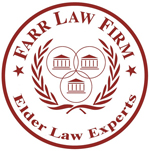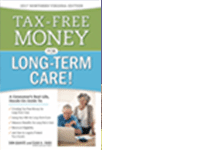
It’s the first week of fall and Fall Prevention Week 2020!
A year before the Coronavirus pandemic, Miriam suffered repeated falls and a broken femur. After she spent time in a rehabilitation facility and participated in 3 months of private physical therapy, her mobility was still limited by a walker. Miriam was feeling helpless, depressed, and isolated from the community.
Sandi, her daughter and caregiver, had to do something to help her mom. While flipping through a local senior publication, Sandi saw an ad for a local fall prevention program. Sandi encouraged her mother to sign up, and Miriam begrudgingly enrolled in the 8-week program. The program helped Miriam gain confidence and reduce her fear of falling. By week 4, Miriam was using a cane instead of her walker; by week 8, she could walk 10 minutes on her own. Miriam’s confidence was up and her mood improved dramatically.
After she completed the fall prevention program, Miriam enrolled in a Tai Chi program at the senior center. After two and a half months of Tai Chi, she no longer needed to use a cane. She is now a certified class instructor for both fall prevention classes and Tai Chi, classes she now teaches over Zoom.
Family Caregivers Can Help Loved Ones Manage Falls
Research has shown that one out of four people age 65+ falls each year. 20% of falls cause a serious injury such as a hip fracture or other broken bone. Falls, with or without injury, can result in loss of mobility, loss of independence, and deterioration in quality of life. Caregivers are impacted, too, experiencing a significant increase in their workload, sometimes leading to depression. The good news is that, similar to Sandi in our example, you have the power to reduce your loved one’s risk of falling.
To reduce the risk of falling, older adults can improve balance and strength. Taking action to help your loved one address the risk of falling is an important way to help him or her stay healthy and independent for as long as possible. Fall prevention activities are beneficial to everyone across the lifespan, and they can be fun! The steps below can help you work with your loved one to develop a fall prevention action plan:
- Start the conversation: Explain that you are concerned about your loved one’s overall safety and want to partner on preventative measures. Suggest accompanying him or her to a wellness checkup that includes a fall-risk assessment. The National Coalition of Aging (NCOA) has a “Falls Free CheckUp” available on their website that was developed by the Greater Los Angeles VA Geriatric Research Education Clinical Center. They suggest that if you are concerned, you should also seek the advice of your physician or other qualified health provider with any questions you may have regarding a medical condition.
- Discuss current health conditions: Has your loved one experienced any chronic conditions that might cause lethargy, stiffness, or balance issues? These can include arthritis, depression, and diabetes. If so, encourage your loved one to speak openly with health care providers about managing their concerns. He or she should take advantage of preventive benefits available under Medicare, such as the Annual Wellness visit.
- Talk about medications: Many prescription and over-the-counter medications can cause side effects, such as dizziness, sleepiness, low blood pressure, dehydration, or drug interactions, that can lead to falls. Discuss medication side effects with a doctor or pharmacist, and keep a list of medications on hand so doctors and pharmacists can review new prescriptions.
- Eye exams: Make sure your care recipient has an annual vision exam to check for age-related eye diseases such as macular degeneration, glaucoma, diabetic retinopathy, and cataracts. If they wear glasses, be sure their prescription is current and being used as advised by the eye doctor. Bifocals can be problematic on stairs, so it’s important to be cautious.
- Notice changes in mobility: Is your loved one holding onto walls, furniture, or someone’s arm when walking? Does he or she experience difficulty getting out of their chair? These can be signs of problems with balance, strength, or gait. If you notice changes in mobility that should be addressed, make an appointment with a trained physical therapist to help improve functional mobility, balance, or gait. A physical therapist might also suggest a cane or walker—and provide guidance on how to use these aids.
- Do a walk-through safety assessment of the home: Most falls happen at home. There are many simple and inexpensive ways to make a home safer. Examples of simple home safety modifications include:
- Lighting: Increase lighting throughout the house, especially at the top and bottom of stairs. Ensure that lighting is readily available when getting up in the middle of the night; install night-lights in the bathroom and in the hallways that are used after dark (preferably red-color night lights as white lights and blue lights are known to interfere with sleep cycles).
- Stairs: Make sure there are two secure rails on all stairs. If stairs are made of a smooth material (e.g. wood or tile), apply anti-slip tape to ensure proper footing and grip.
- Bathrooms: Install grab bars in the tub/shower and near the toilet. Make sure they’re installed where your loved one will actually use them. For even greater safety, consider using a shower chair and hand-held shower.
- Floors: Keep floors free of clutter. Remove small throw rugs or use double-sided tape to keep the rugs from slipping.
The American Physical Therapy Association offers a free five minute video on home modifications for reducing fall risks. Free fact sheets, on home modifications and “preventing falls around pets,” are available from the Fall Prevention Center of Excellence.
- Find a community-based falls prevention program: Many communities across the country offer falls prevention programs that have been proven to help people reduce their risk and fear of falling. Find a program in Fairfax, Montgomery County, MD. The only active programs in Washington, DC itself are affiliated with DC hospitals, so be sure to check their websites. Also, see this list for Falls Free Coalitions throughout the country.
- Stay fit and exercise: Yoga, Qi Gong, Tai Chi and more can help your loved one improve their balance, so consider signing up for a virtual class. Before starting any new fitness regimen, always consult with a doctor.
What to Do if a Loved One Falls
What if, after all the precautions you take, a loved one still falls? The National Institutes of Health recommend that your loved one takes a few moments to relax, to recover from the shock of having fallen, and to evaluate whether he or she is badly hurt. Caregivers should avoid the temptation of helping a person up without first checking for injuries. Moving an injured person can exacerbate the existing injuries or cause new ones. If hurt, you should phone 911. Older adults who live alone might consider keeping a phone low to the ground for such emergencies, or better yet, purchase a personal emergency response system plan (PERS).
To safely get up after a fall, the Wisconsin Institute of Aging suggests elders go slow; bend knees and roll on their side; use one elbow to push up into a crawl position; wait a moment to assure balance; crawl to a chair or table; and then use the chair or table to pull oneself to a standing or seated position. A free, short video, from Phillips Lifeline (a for-profit PERS provider), also demonstrates techniques for rising after a fall.
Although falls are dangerous, and can be life changing, they are not inevitable. All of us can take steps to reduce our risk of falling, or reduce the risk for a loved one.
When Taking Preventative Measures Isn’t Enough
When taking preventative measures isn’t enough, assisted living or nursing home care may be needed for your loved one. Nursing homes in the DC area can cost as much as $150,000 per year or more, however, which is a catastrophic amount for any of us!
Life Care Planning and Medicaid Asset Protection is the process of protecting you or your loved ones from having to go broke paying for nursing home care, while also helping ensure that you or your loved ones get the best possible care and maintain the highest possible quality of life, whether at home, in an assisted living facility, or in a nursing home. As always, we offer initial consultations to potential new clients.












